What Size Bike Chain Do I Need
Replacement bondage for bicycles are usually longer than you lot demand. This repair help article volition take you step by pace through the dissimilar methods of sizing a bike concatenation.
1
Preliminary Info
Earlier we brainstorm the chain sizing procedure, allow'south outset define the two types of multi-speed cycle chain. There are chains that use a quick link and bondage that use a special connecting rivet bondage. Quick link bondage use two removable outer plates to connect the chain. Connecting rivet chains utilise a special rivet to connect the chain.
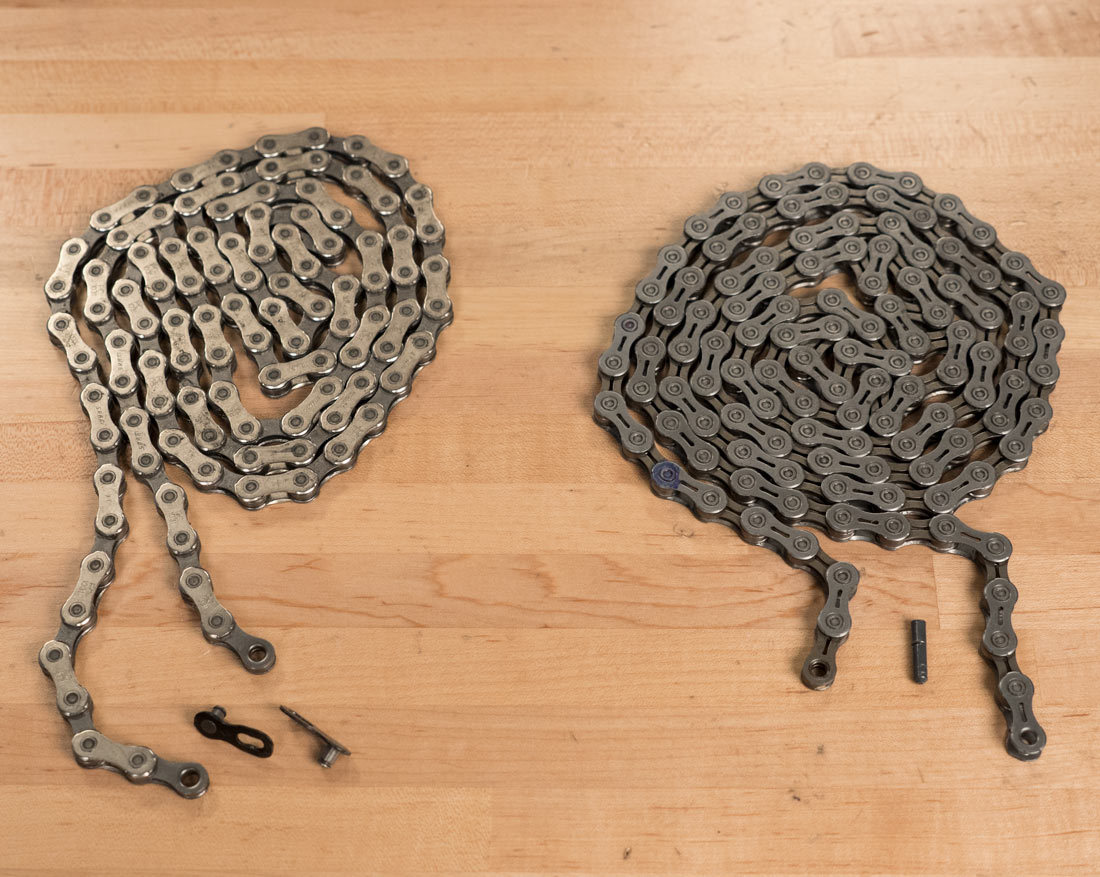
two
Bank check & Remove Chain
Before removing the old concatenation, verify that information technology is the correct length.
Shift the bike into the largest chainring and rear cog. The chain should be long plenty to make this shift with two slight bends at each pulley of the rear derailleur.
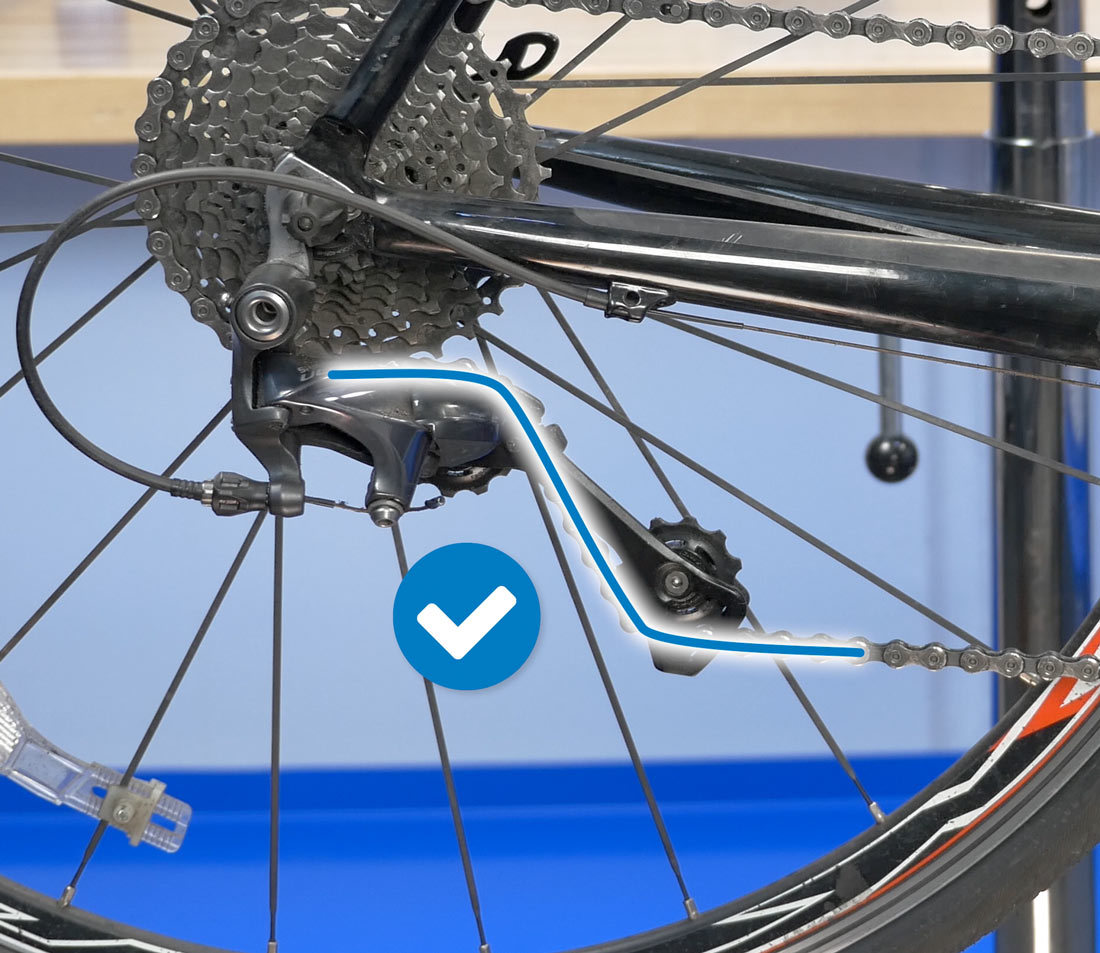
Next, shift to the smallest chainring and sprocket. There should be no slack in the chain, and the derailleur should not pull so far dorsum that the chain contacts itself.
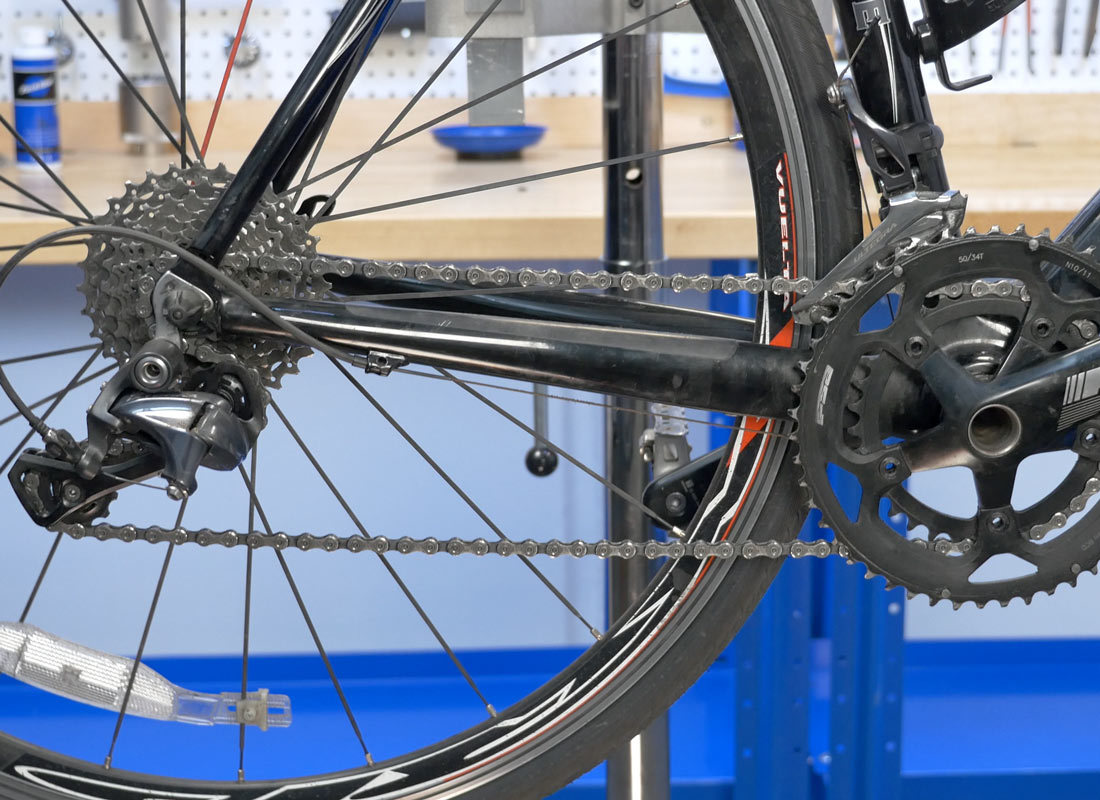
Side by side, remove the rear wheel. This volition take tension off the chain and give you lot better access to the chain. Audit the concatenation for a master link.
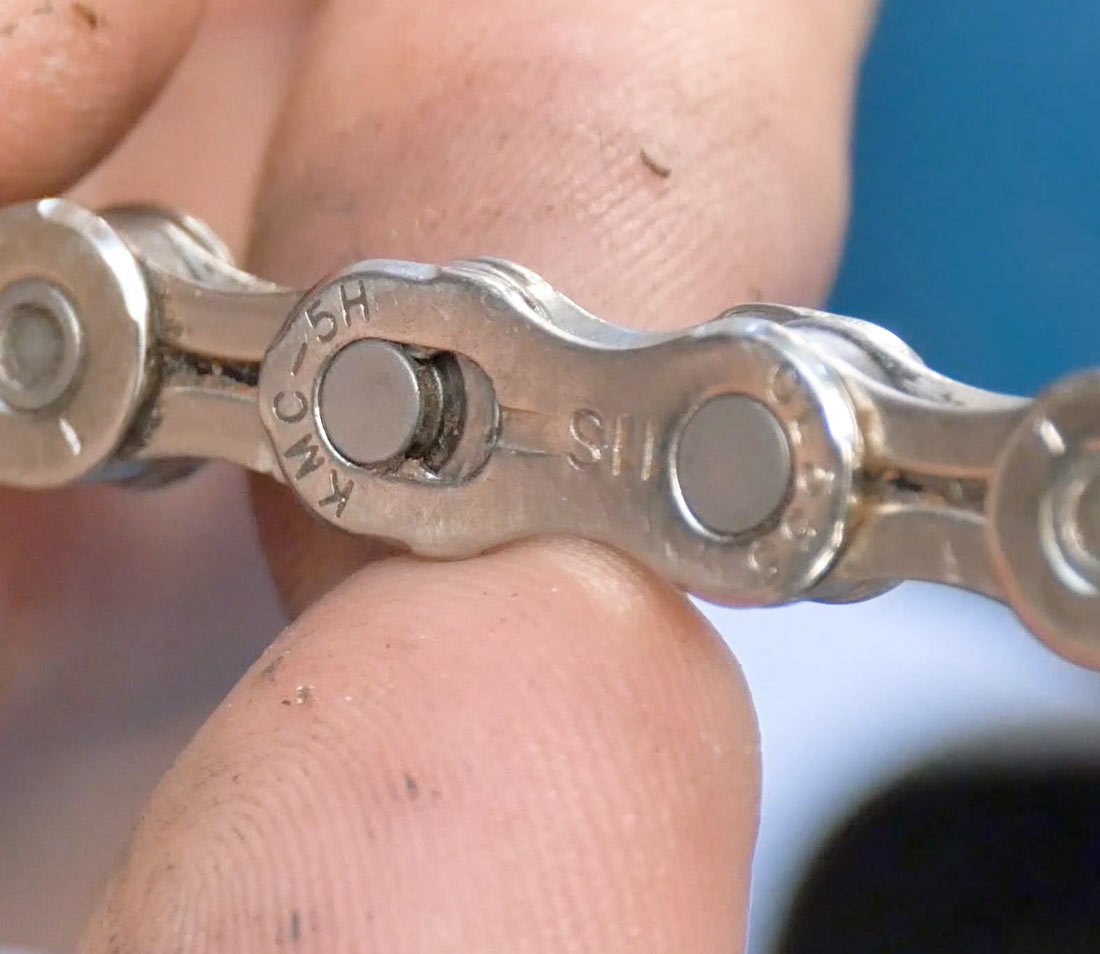
Quick Link Bondage
If a quick link, sometimes chosen main links, are present, use a primary link pliers such equally the Park MLP-1.2 to disengage the link. If y'all have a chain tool and your concatenation is worn out, you can ignore the master link and simply cut the chain using a chain tool.
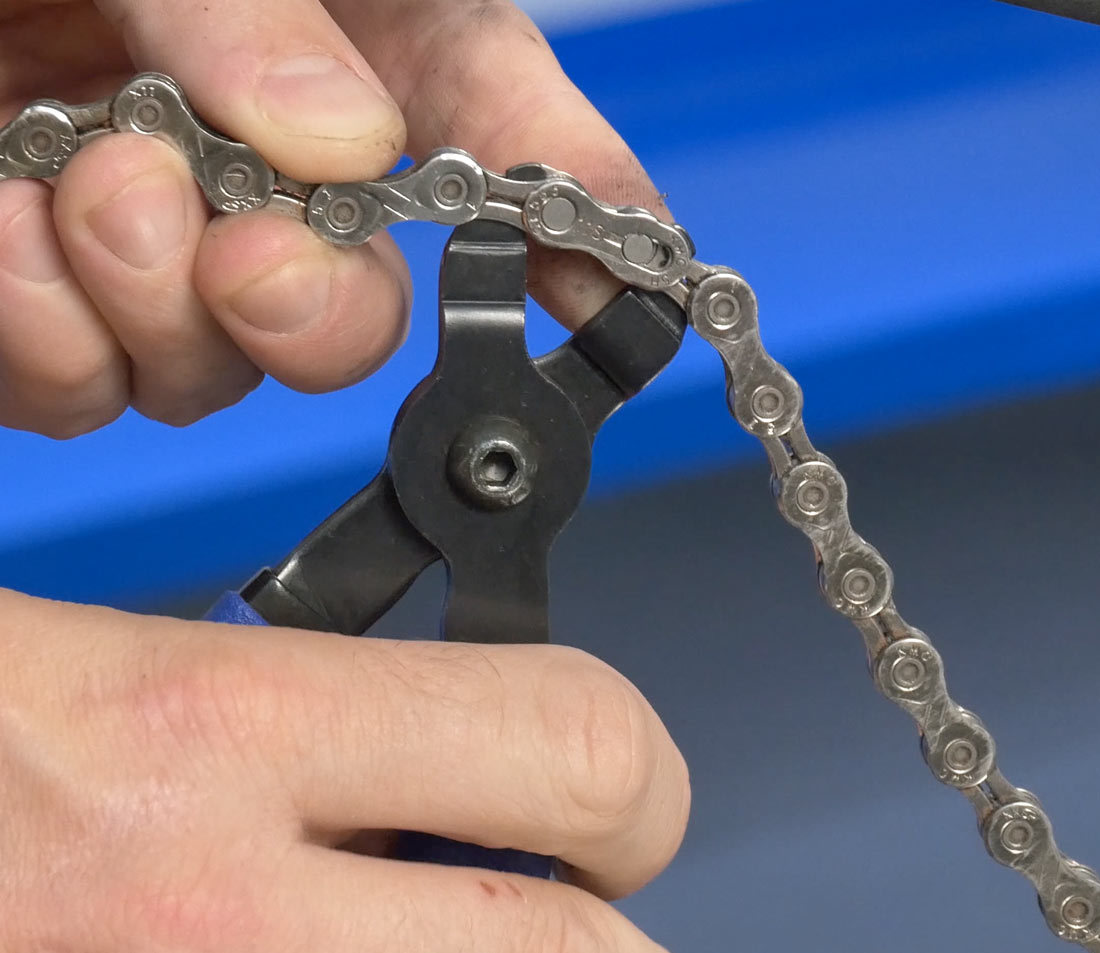
Connexion Rivet Chains
Connecting rivets will announced visually different from other rivets. When selecting a rivet to intermission, be sure that it is at least a couple of links away from any connecting rivet already installed in the chain. Install the chain tool and bring the driving pin of the chain tool into contact with the connecting rivet. Ensure the chain tool pin is driving in a straight line into the chain rivet. Turn the handle with force and bulldoze out the rivet, then remove the chain.
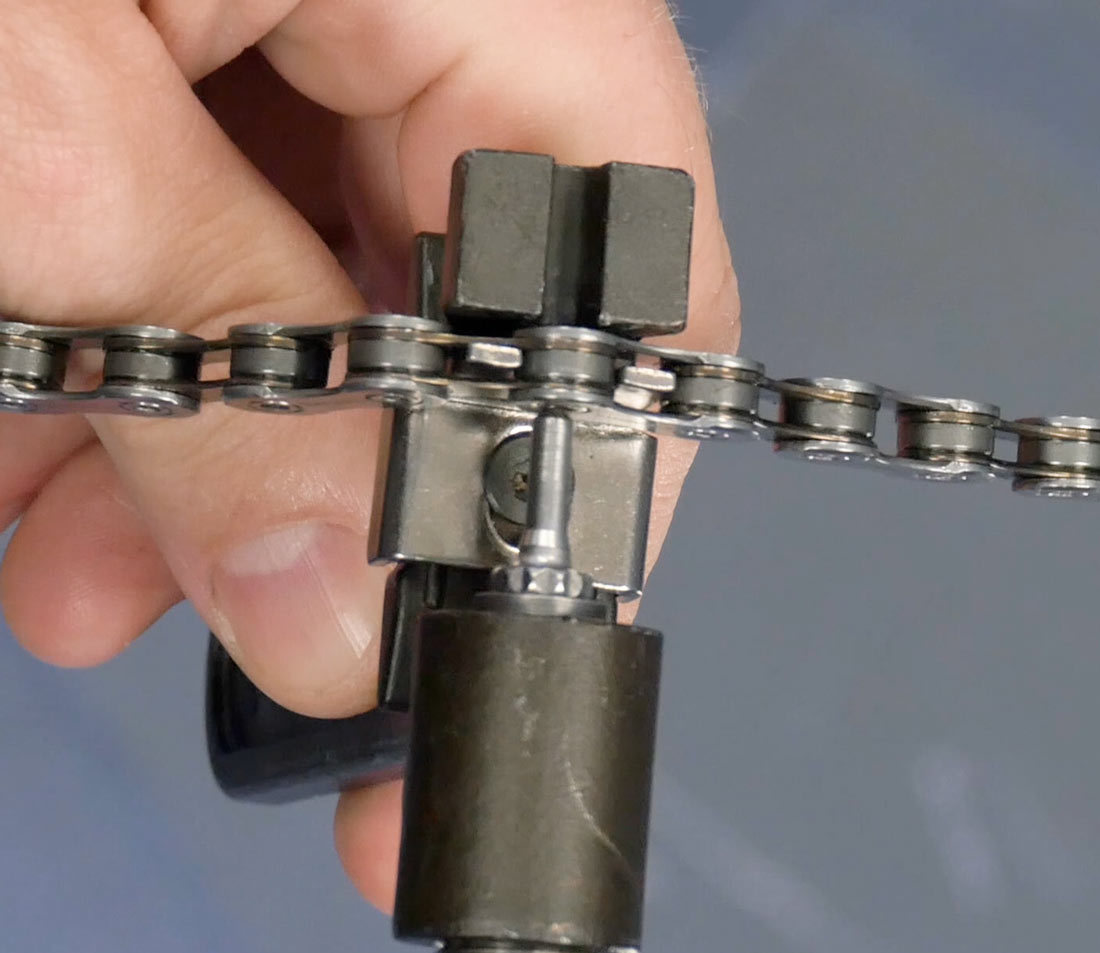
Bring tool into contact with rivet
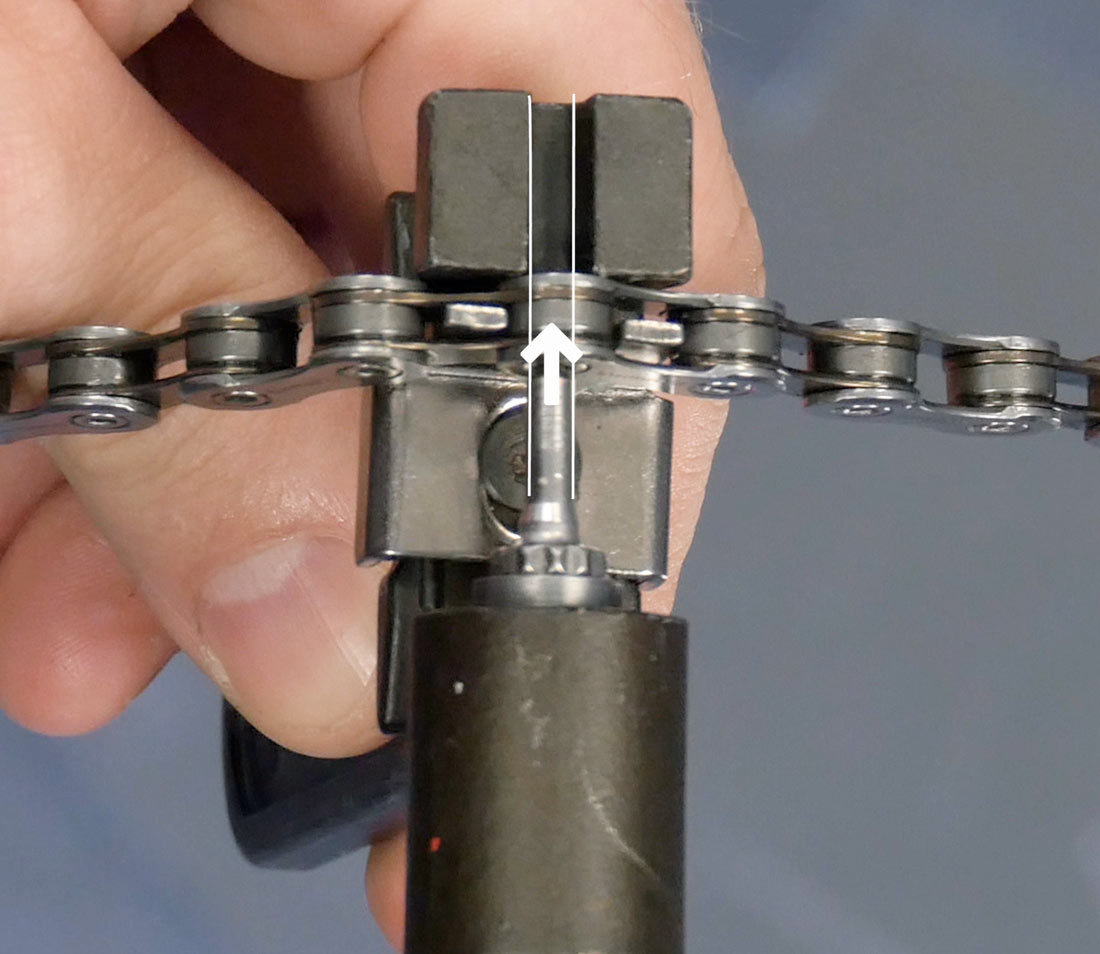
Drive out in straight line
3
Sizing to Original Concatenation
If the old chain is an acceptable length, lay it next to the new chain. Ever line up outer plates with outer plates or inner plates with inner plates. This example is incorrect because nosotros take an end with outer plates being compared to an finish with inner plates. Insert the master link to get a true side by side comparison. Take care to match them rivet by rivet noting that old chains will lengthen as they wearable.
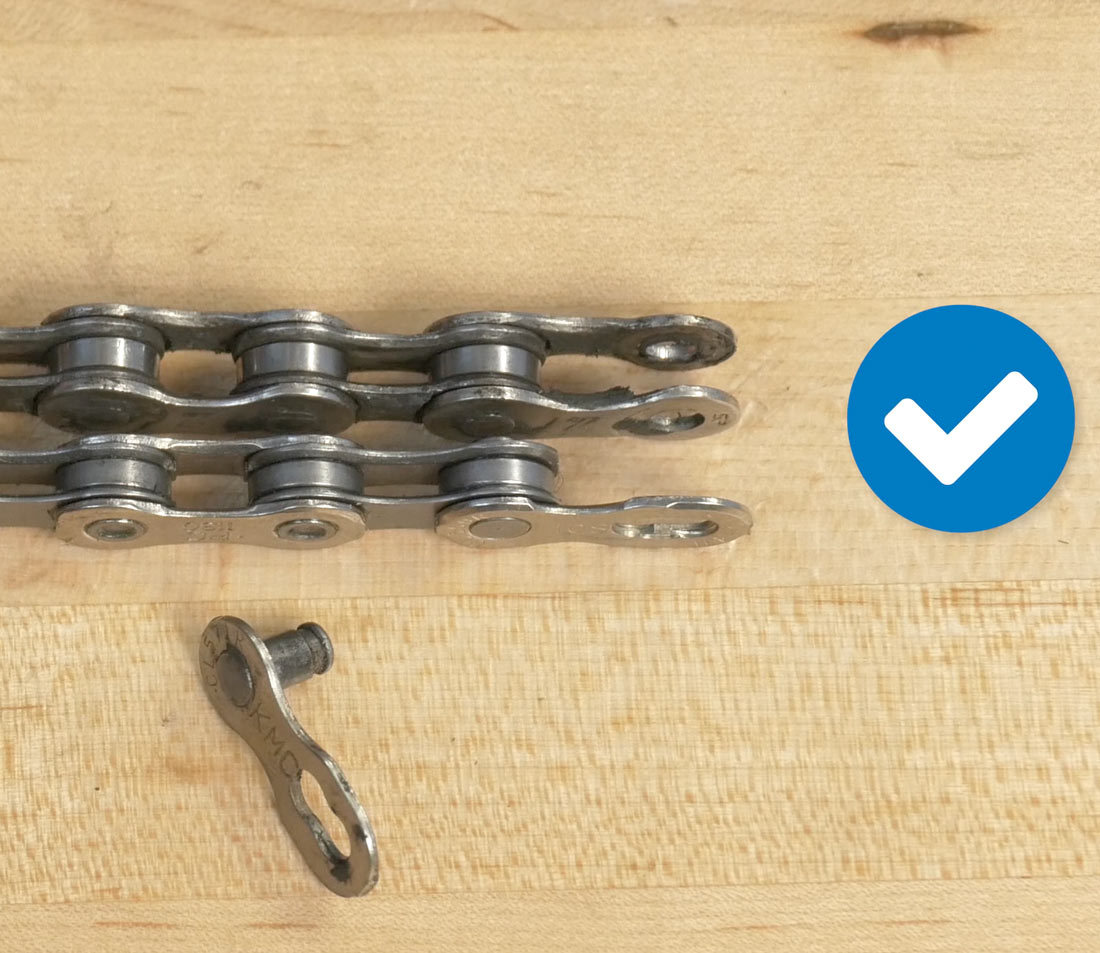
Add master link for comparison
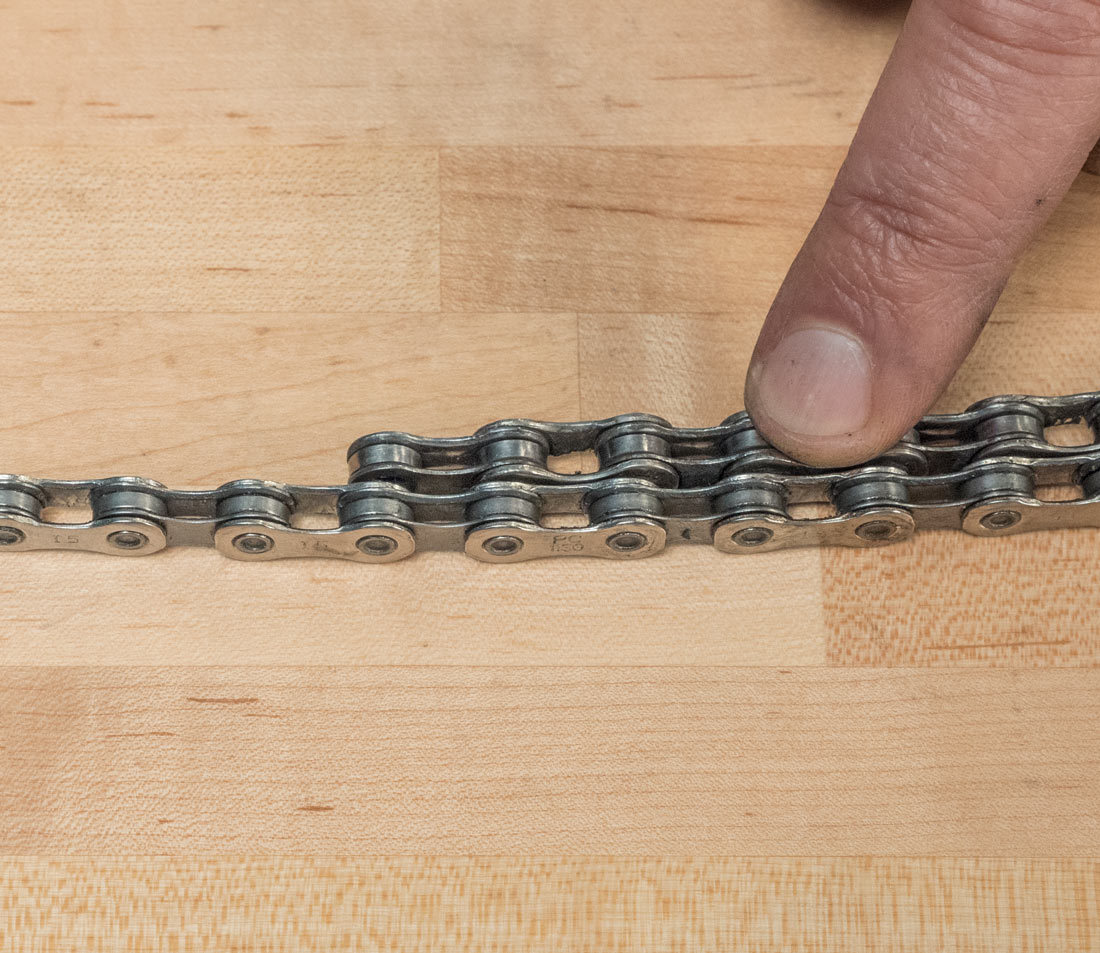
Friction match rivets on used chain to new chain
four
Largest Cog & Largest Chainring Method
The method of chain sizing depends upon the range of gearing in the organization. For bikes with rear sprockets 36 teeth and smaller, the common system is to measure using the largest rear sprocket and largest front ring as a reference. Ii rivets are added to this (one-inch) for the place to cut the concatenation.
If the rear sprockets are 42 teeth or larger, such as on dedicated 1X organisation ("i-by), extra chain is added as described below.
First, shift the front end derailleur over the largest chainring and the rear derailleur to the smallest cog. Begin by wrapping the chain around the largest rear cog. If the new chain has ane end with an outer plate, it should be routed toward the front chainring. Pass the chain terminate through the forepart derailleur cage onto the largest front chainring and concord it at about the five o'clock position.
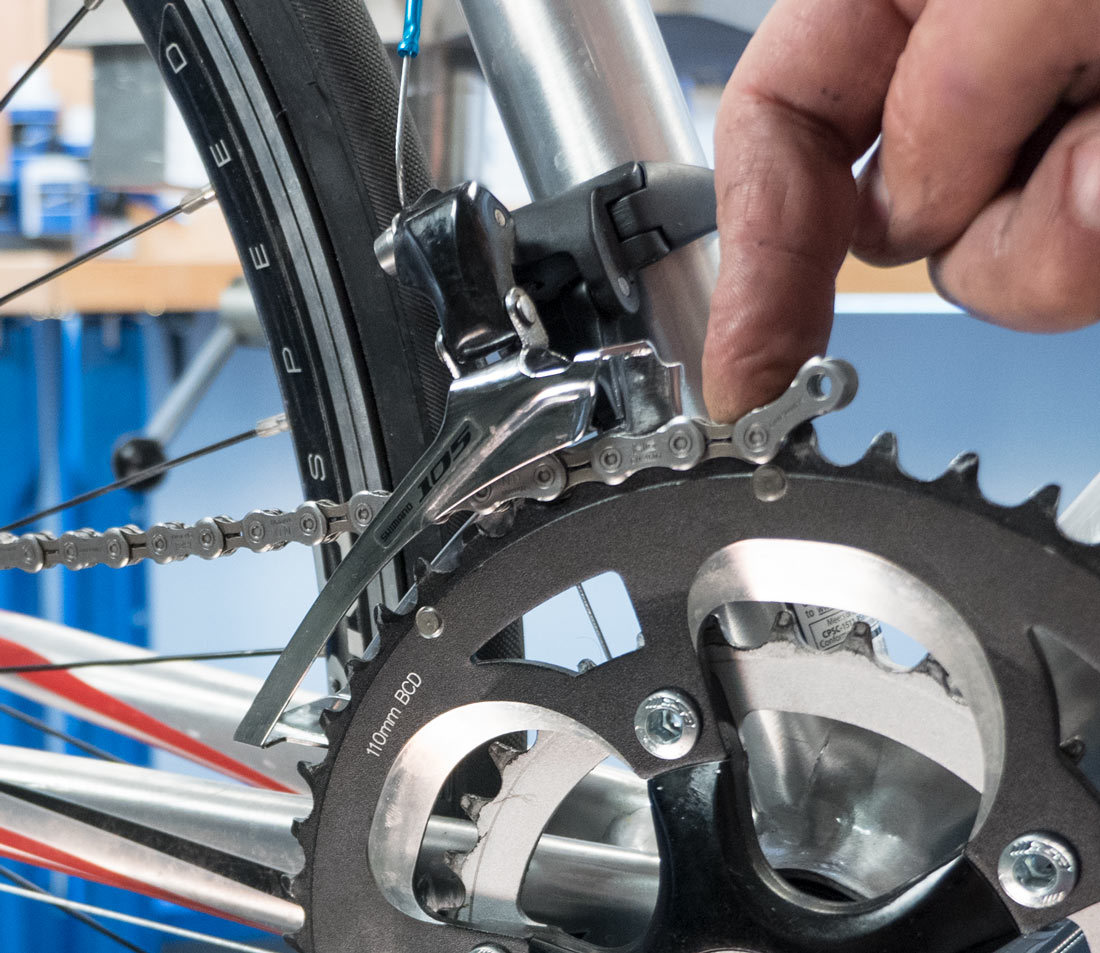
Pass chain through front end derailleur
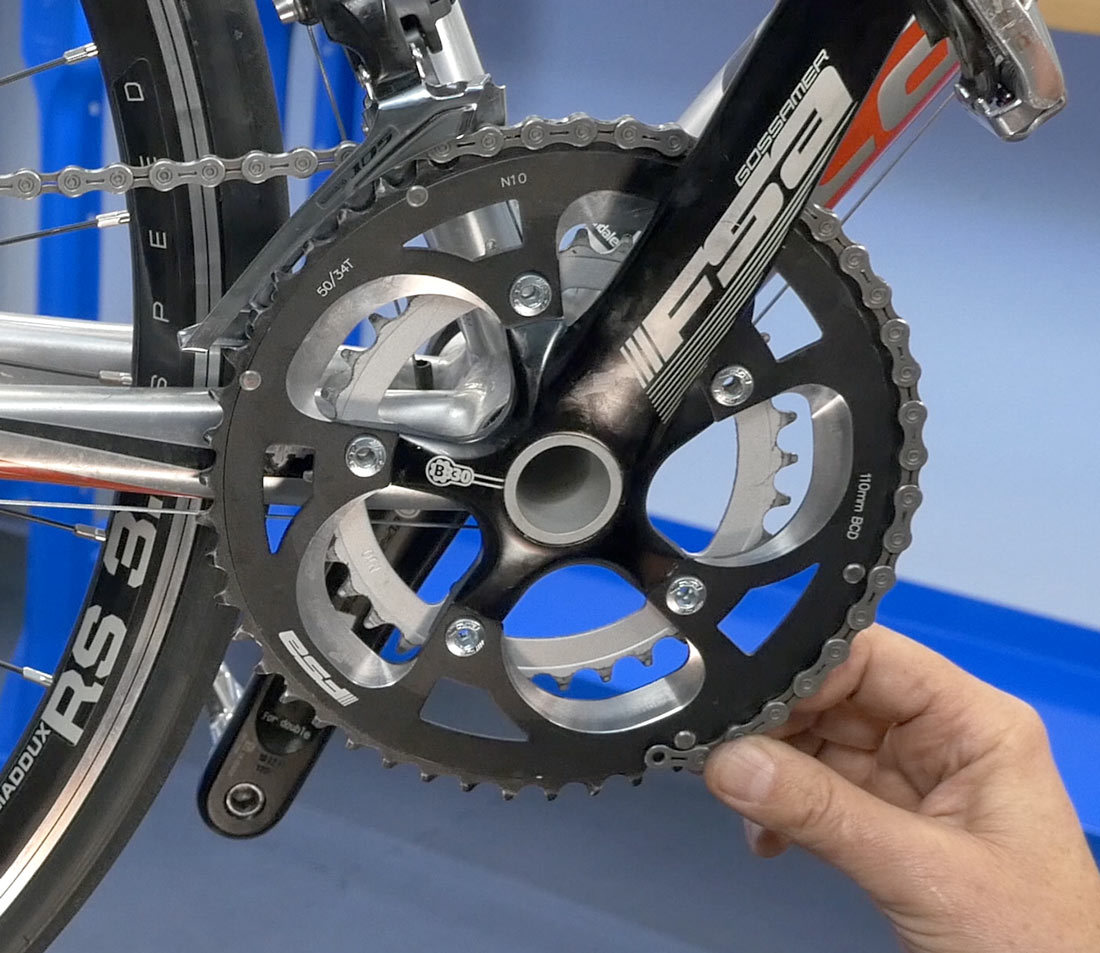
Hold at 5 o'clock position
If the concatenation uses a master link, install one-half of the primary link. This will business relationship for the actress one-half inch the master link provides. With this plate installed, the rest of the procedure is the same for master link and connecting rivet chains. Pull the lower section of chain snug and engage it on the front chainring.
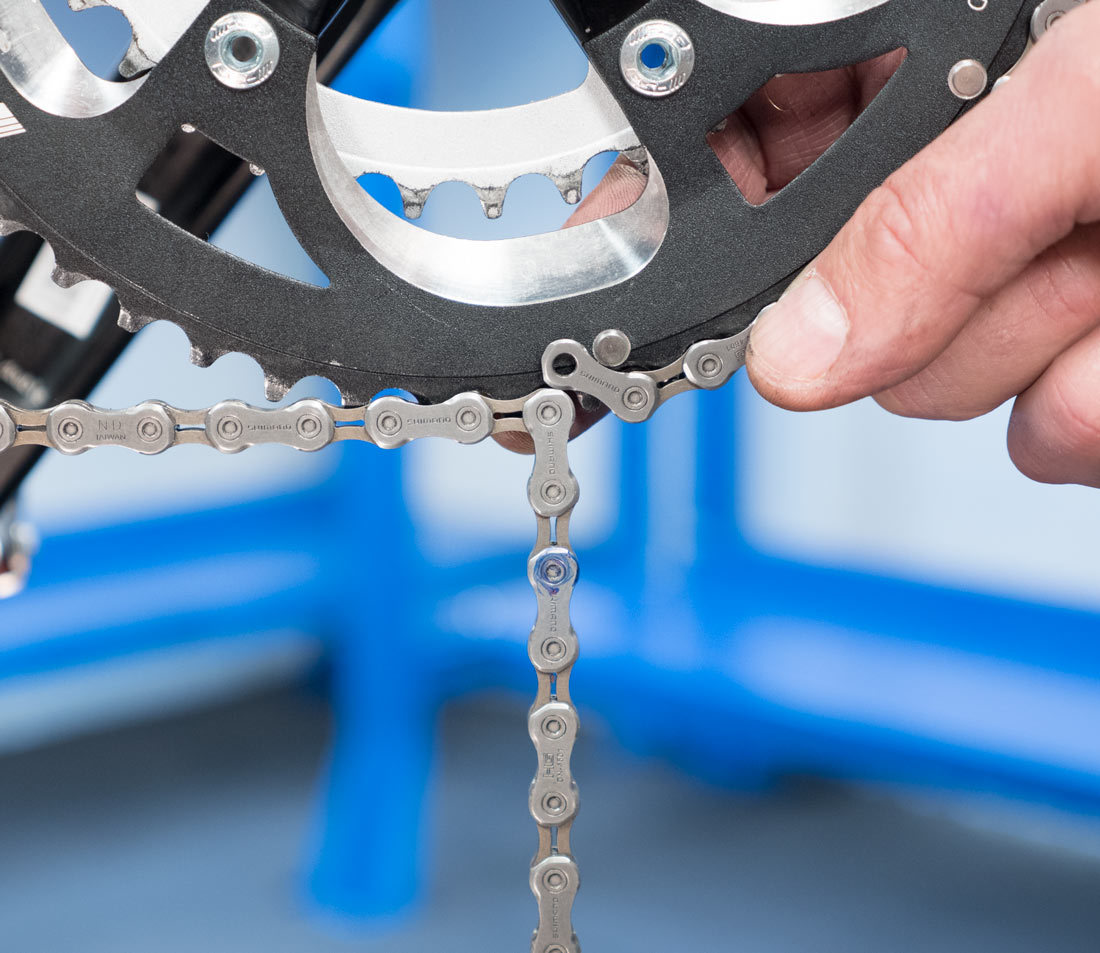
Pay special attention that the chain is fully engaged on the largest rear cog for accurate sizing. You lot will bypass the rear derailleur entirely for this footstep and extra length will be added afterward to business relationship for this. Find the closest rivet where the ii chain ends could be joined. You will match inner plates to outer plates in society to bring together the chain. The rivet closest to where the chain can exist joined is the reference rivet. From the rivet nosotros add two additional rivets.
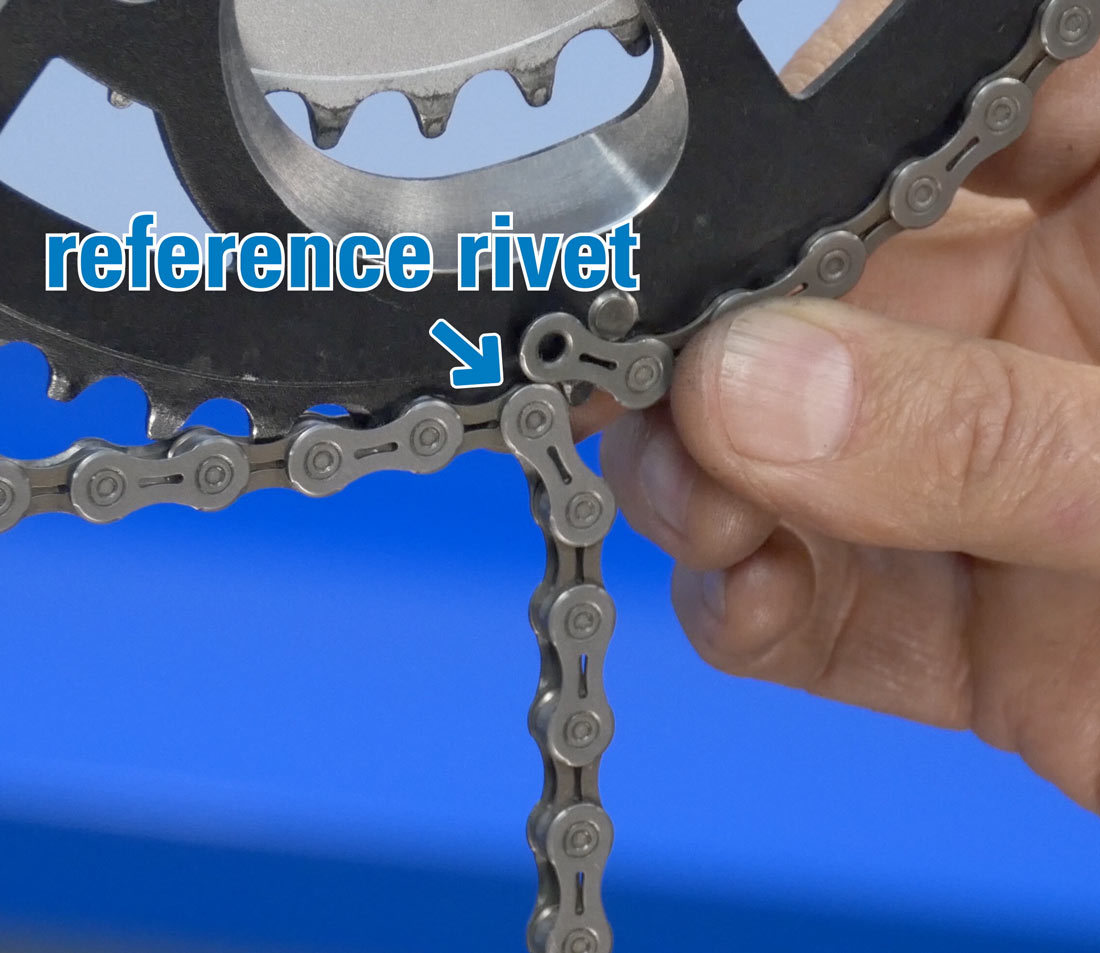
Reference rivet
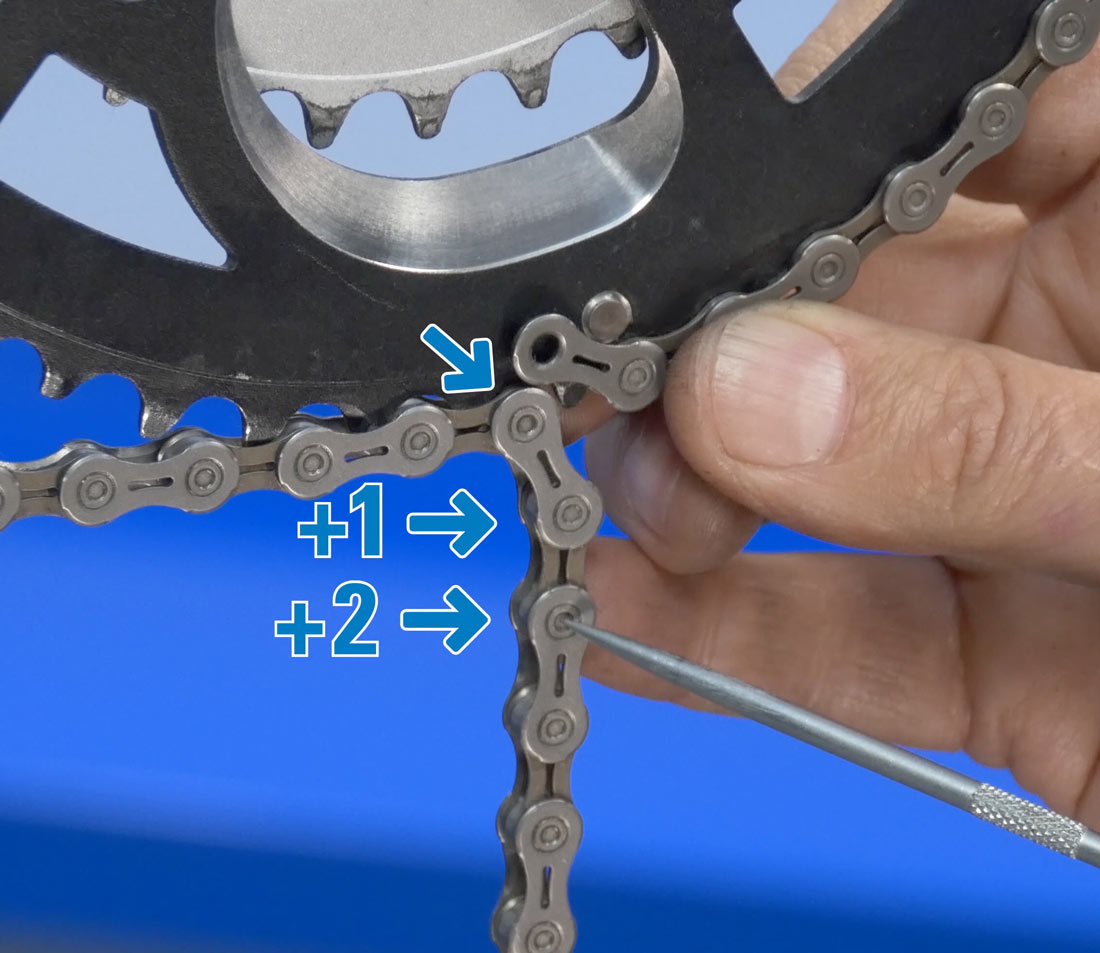
Add together two rivets
This is the cutting point for your chain. Information technology tin can occur that, when we pull the lower section snug, an outer plate meets an outer plate. This cannot be the reference rivet because the chain cannot be joined here. Add one rivet. This becomes the reference rivet and from here we add two additional rivets, cut the chain with a chain tool, and the chain is sized.
five
Largest to Largest plus 2 inches for Dedicated 1X
The dedicated 1X systems use a unmarried front ring in combination with a wide range of rear sprockets. Derailleur manufacturers use large rear 42 tooth and larger sprockets. These require a longer chain compared to the bikes using less of a wide range.
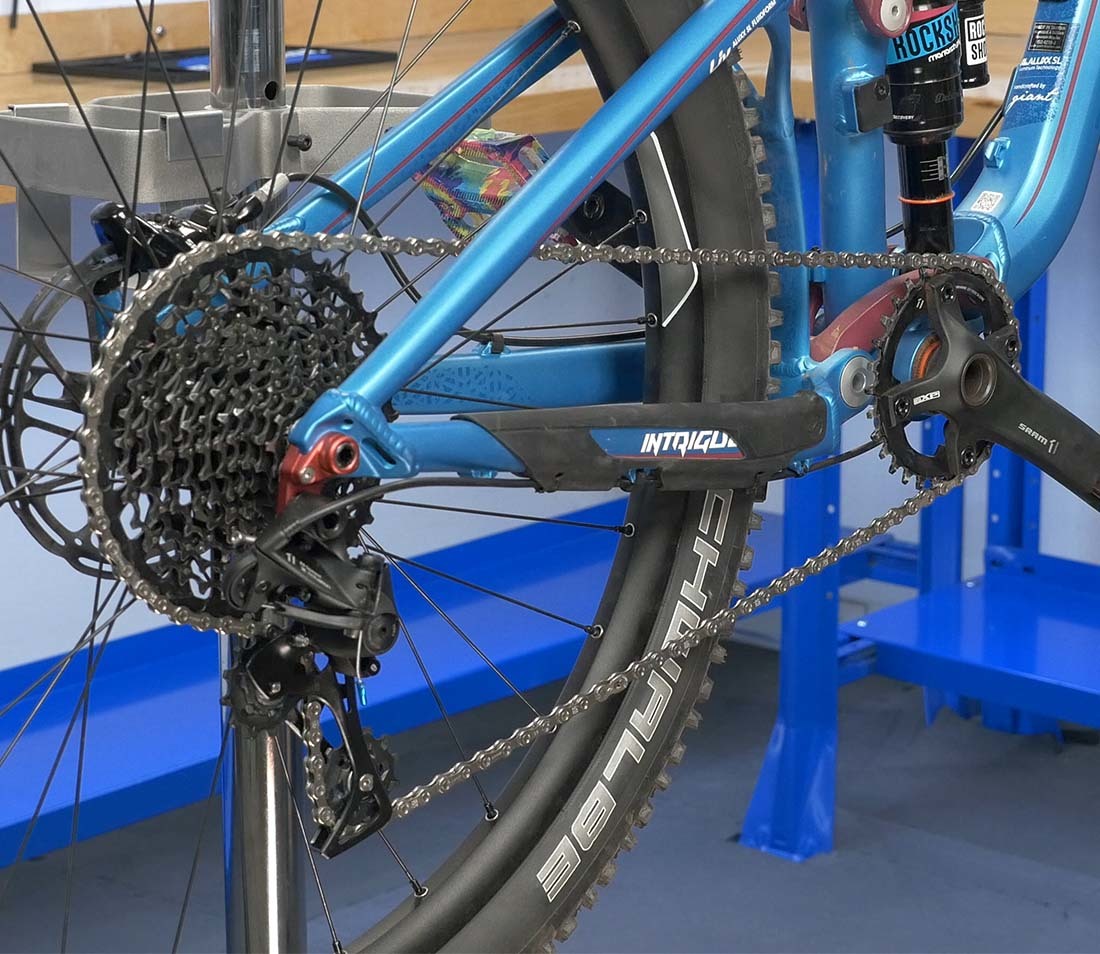
Without passing through the rear derailleur, road the chain over the front band and the largest rear spocket. Determine the shortest length where a concatenation would connect inner and outer plates. From this indicate, count 4 rivets as the point to shorten the chain. This is an addition is two rivets (ane-inch) more than non-dedicated 1X organisation.
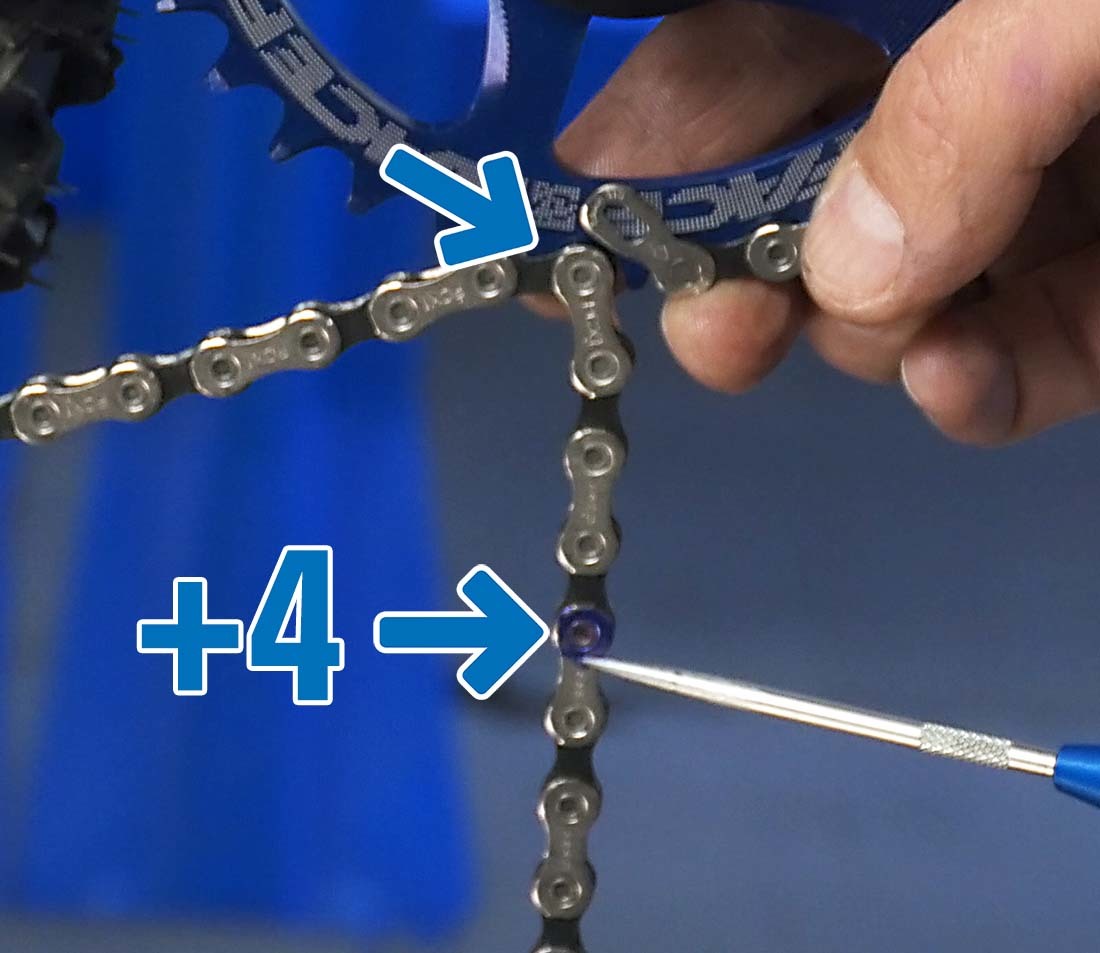
six
Exceptions & Considerations
Another consideration deals with rear suspension. The distance between the rear cogs and front end chainrings will alter as the suspension compresses and moves for bumps. To account for that, disconnect the stupor, and shrink the linkage.
If the cycle uses a chain guide, make certain it is routed through the organisation before determining chain length. Add the same ii rivets before to establish the cutting signal.
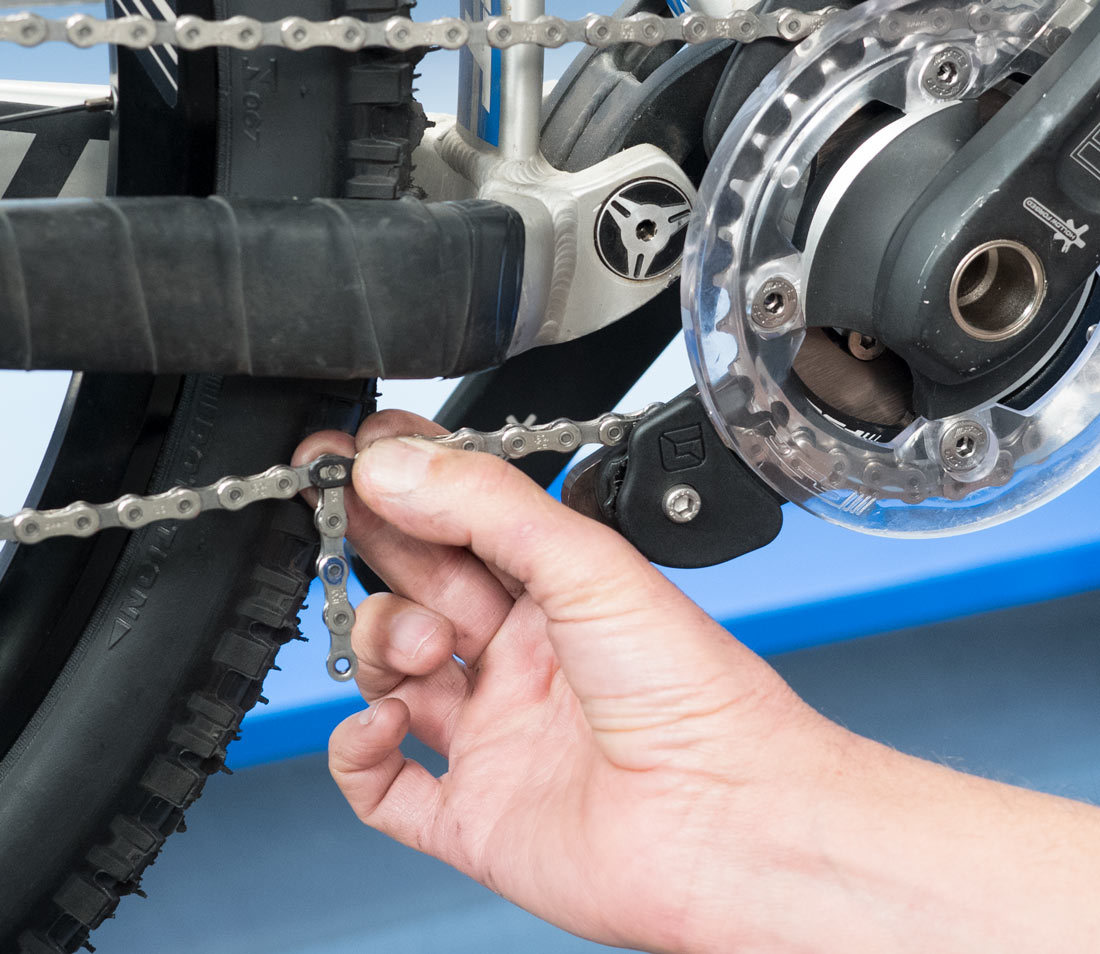

Disconnect daze
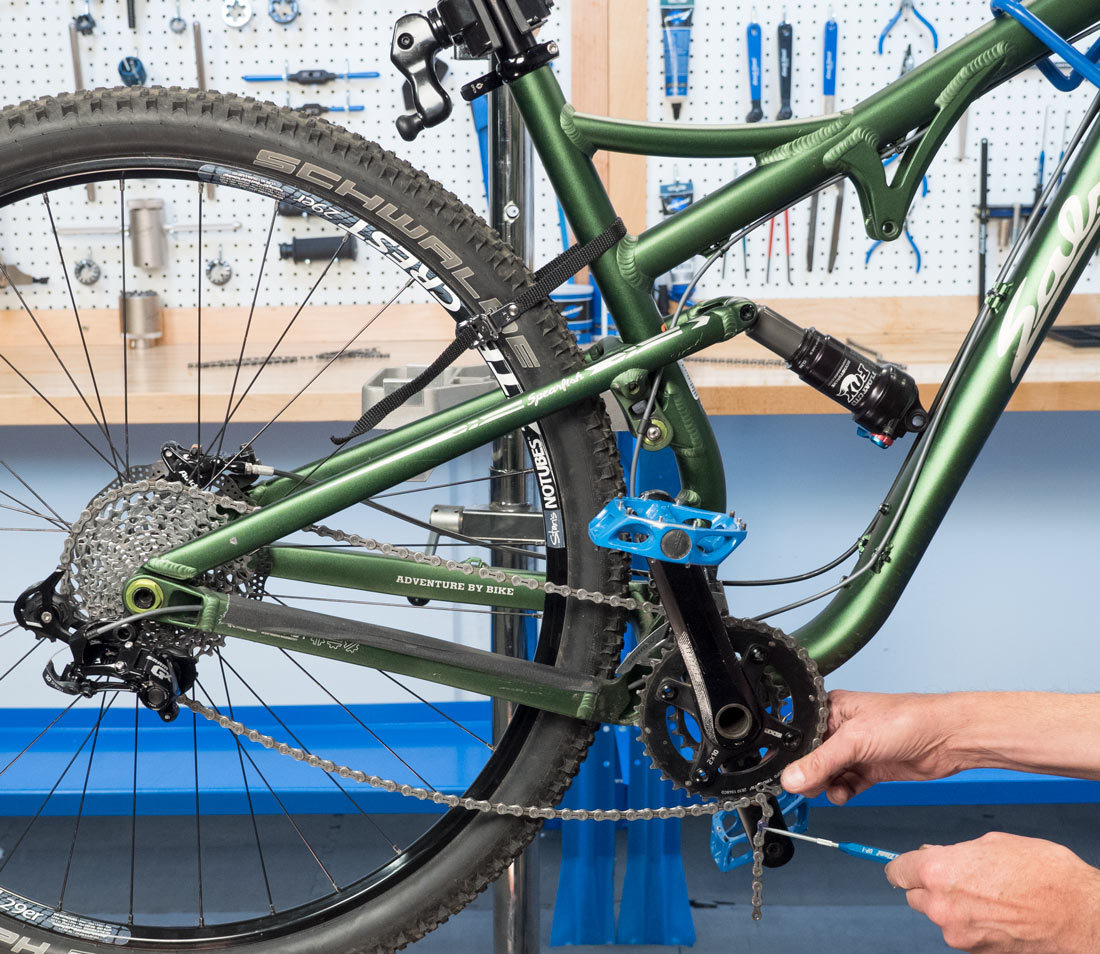
Compress linkage
What Size Bike Chain Do I Need,
Source: https://www.parktool.com/blog/repair-help/chain-length-sizing
Posted by: hurstaffing1947.blogspot.com


0 Response to "What Size Bike Chain Do I Need"
Post a Comment